The Inca city of Machu Picchu is one of the greatest discoveries in history, as it reveals a lot of history in its constructions and also continues to be mysterious so many continue to study it.
A July 24, 1911 was rediscovered by Assistant Professor of History Hiram Bingham (35 years old) with the support of Yale University, initially Bingham comes looking for the descendants of the Incas of Vilcabamba, but in his journey he finds something bigger.
In this post we will talk about the discovery of Machu Picchu by Hiram Bingham in its different stages, according to the National Geographic article.
This was the discovery of the great Inca city of South America:
In the image you can see the imposing Machu Picchu, on the left side you can see the cliff that served to defend the Inca city from aggressions, you can also see a system of terraces where the inhabitants who lived in the place planted their crops.
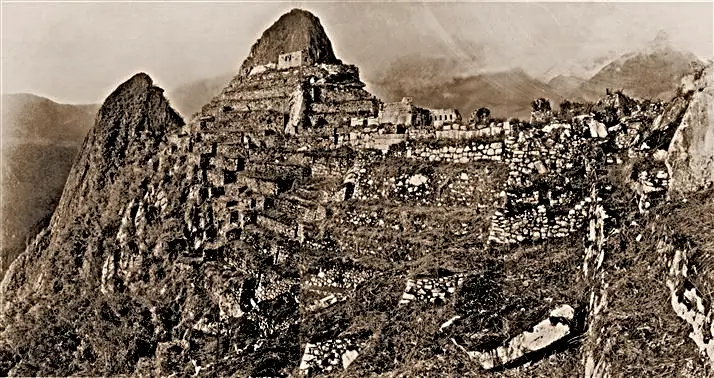
A semicircular tower can be seen and the inside of the wall faces the King's Group and the nearby staircase faces the Private Orchards Group.

Here you can see a photo of Hiram Bingham next to his camp in the Inca city who set out in search of the Inca descendants, but ended up in Machu Picchu. After his findings he did not hesitate to capture every moment with his Kodak camera in order to show evidence of his work.
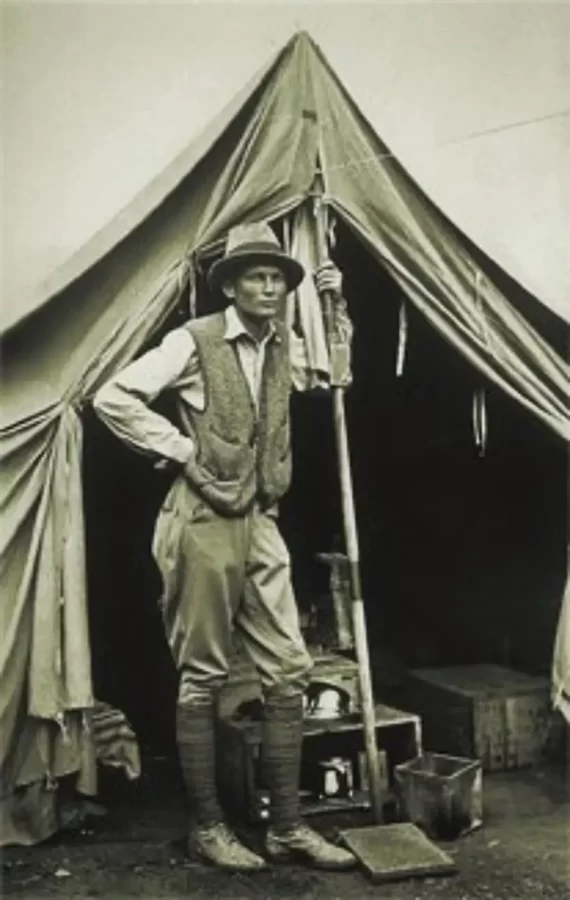
When H. Bingham arrived at the highlands he met the indigenous population who were surprised to see all the work being done by the surveyor, however, Hiram tells that the chief surveyor and his assistant were assaulted by a group of villagers.
And why? They thought that these were bringing some kind of witchcraft or something strange because all the things they had in hand were very different for them and may affect their culture and themselves.
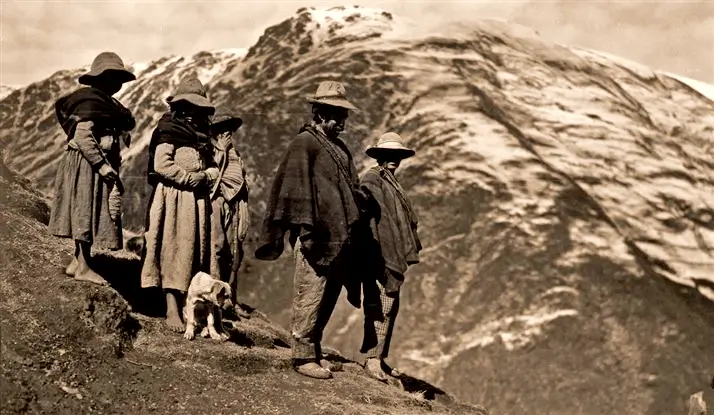
As we know the Inca city is surrounded by the waters of the Apurimac River and for its access we must pass through it, in its beginnings it had to pass in a canoe so Bingham tells us that it was difficult to build one because the wood was dense and could not float.
It can be clearly seen in the image that the helpers are trying to build a raft to transport the mules that were carrying the things they could not get on because the animal was reluctant to go against the current of the waters.
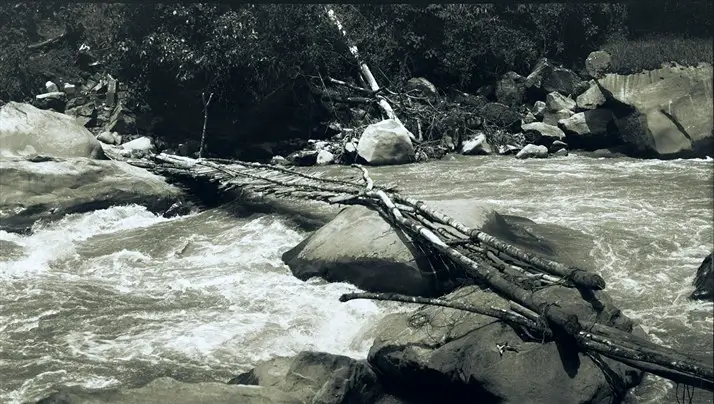
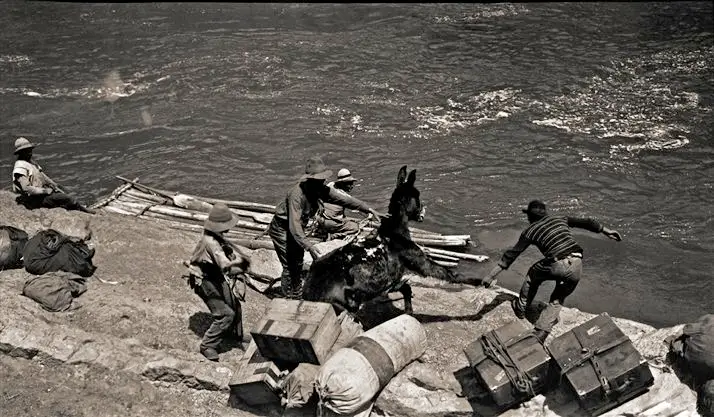
During the expedition of H. Bingham it was necessary to go by roads some of easy access while others were very complicated that made it difficult because the waters of the Apurímac River bordered the citadel.
Along the way you can also see some Inca vestiges or constructions, for example we can see near Ollantaytambo another important Inca construction in the Andes.
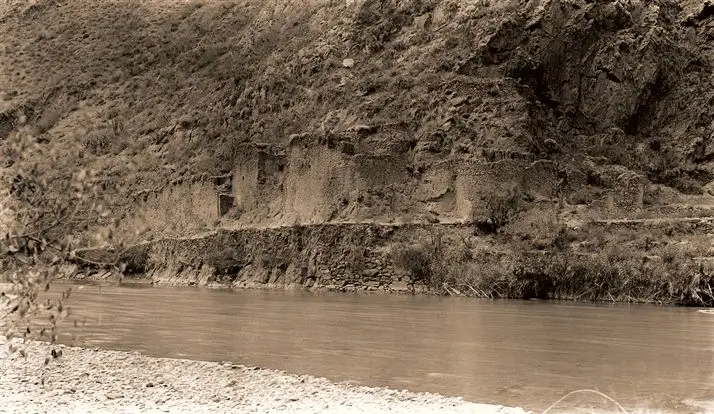
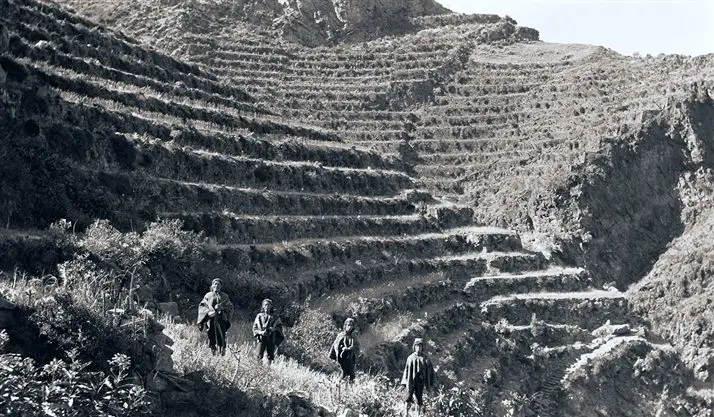
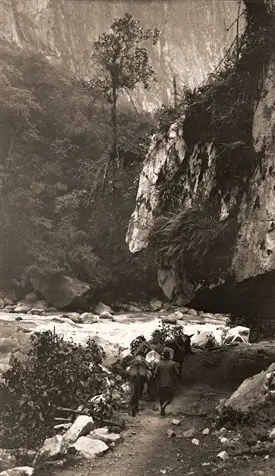
Along the way to the Inca city of Machu Picchu you will find a myriad of archaeological remains, such as the ruins of Pisac which is located at the top of the Yucay valley among others that are located on the way to Machu Picchu.
The structures that we can find in the Sanctuary of Machu Picchu are the houses that have a height of one and a half floors with gables at the ends.
Hastiales are defined as those stones of cylindrical form that come out of the walls of the houses where they indicate that in these holes were placed the wooden beams, some that were in direction to the north can no longer be seen these hastiales and to the south side there is still presence of them.
Likewise, we will find the watchtowers that were built on the highest peak to warn if any enemy was approaching.

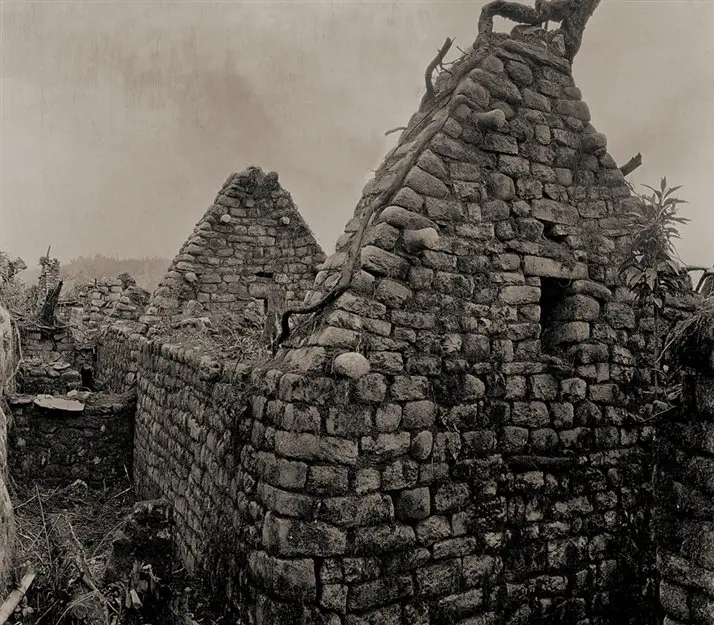
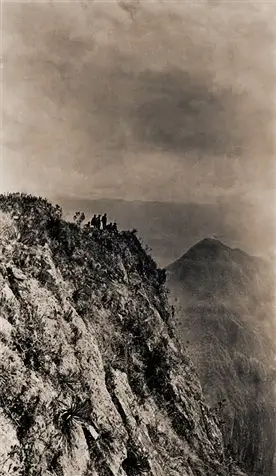
During the excavations, a large number of skeletal remains and skulls were found in more than 100 caves.
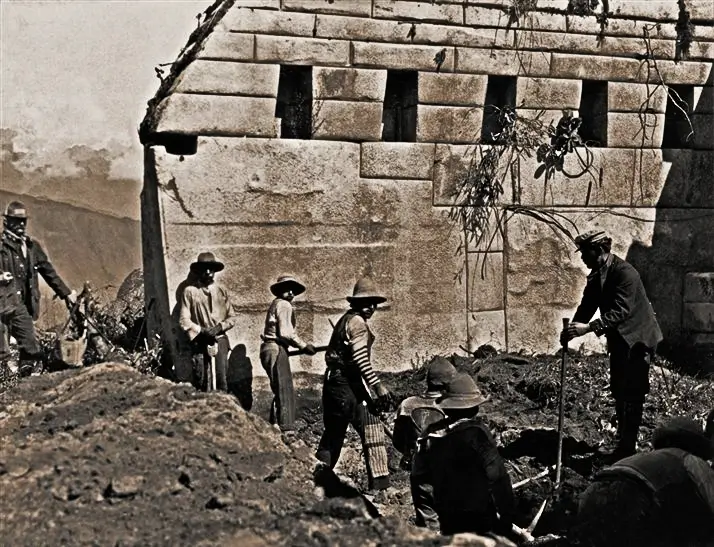
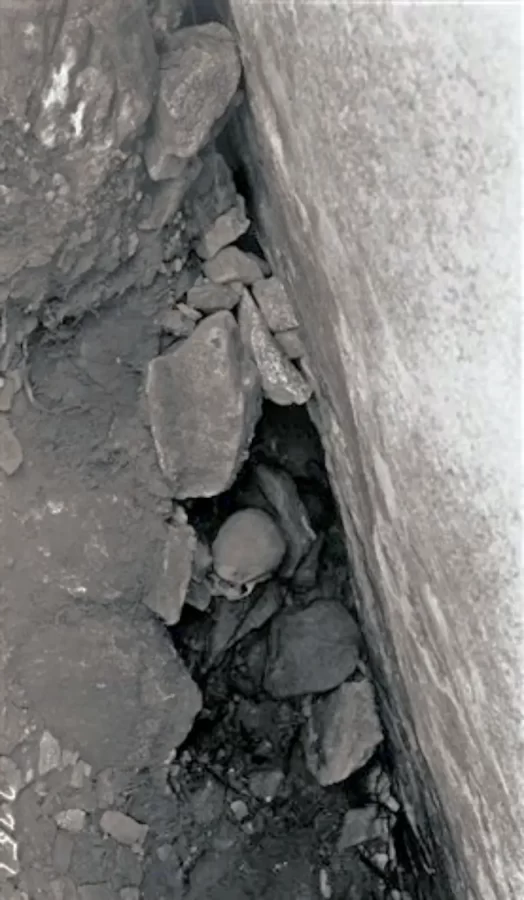
In the photos shown by H. Bingham, he shows us how the workers who helped in the excavations of this great citadel were happy with the work they were doing; however, he had to look for new people every so often to support him, since the others were retiring.
It also describes how the workers before, during and after work always chewed their coca leaves, in the photo you can see how the cheeks show a lump and these would be from the chewed coca, in the Andes this is called pijchar in Quechua (chewing).
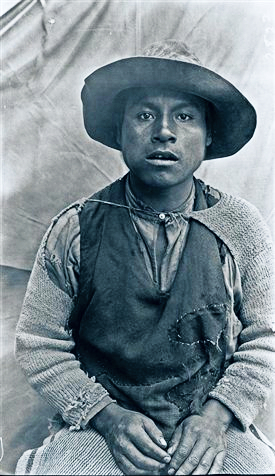
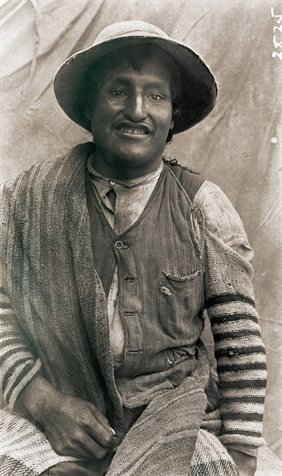
Important places in Machu Picchu.
Here we detail that this place was found, the square would have a symmetrical shape as we see it now, likewise several tombs were found on the floor of the building, were amazed with the architecture shown on the left side of the Main Temple.
Likewise, he finds the Temple of the three windows and considers them as symbolic that are related to the tradition of the origin of the Incas.
In the exploration you can see a long staircase, at the far left you can see a part of the semicircular tower and the window of the snakes.

The photo shows two ladies in front of the largest stone of the main temple of the Sacred Plaza, who are the wives of the two laborers working on the excavation of the citadel.
On the other side of the large stone you can see ornamental niches, on the right side of this you can see that there was a beam that held the roof of this place, but over time it disappeared.

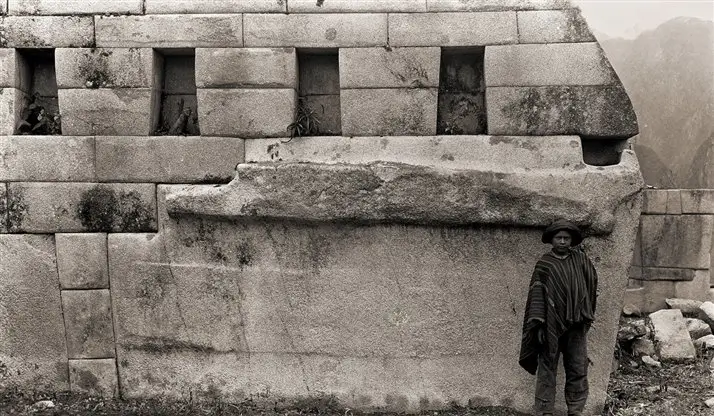
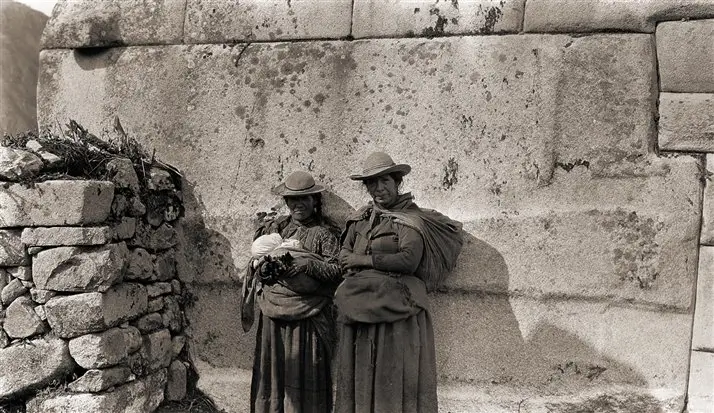
It is said that it was used to catch the sun, it was practically like an agricultural calendar; it is located on a sacred hill in Quechua the Incas called it this way, where Inti means "sun" and Huatana means "rope", like this stone we can also find them in Cusco, Pisac and Ollantaytambo.
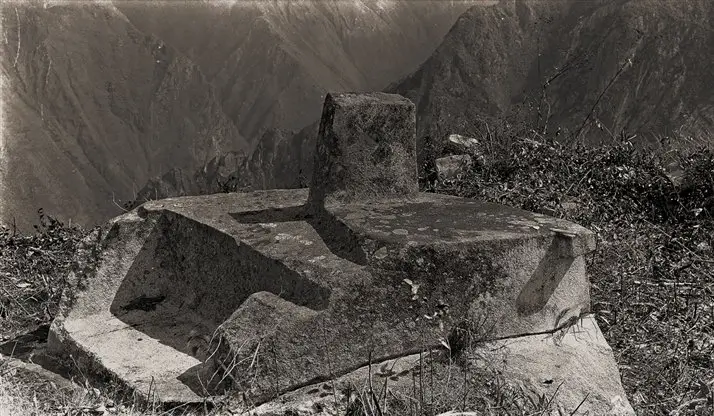
The photo shows some of the ceramic findings in the Inca city.
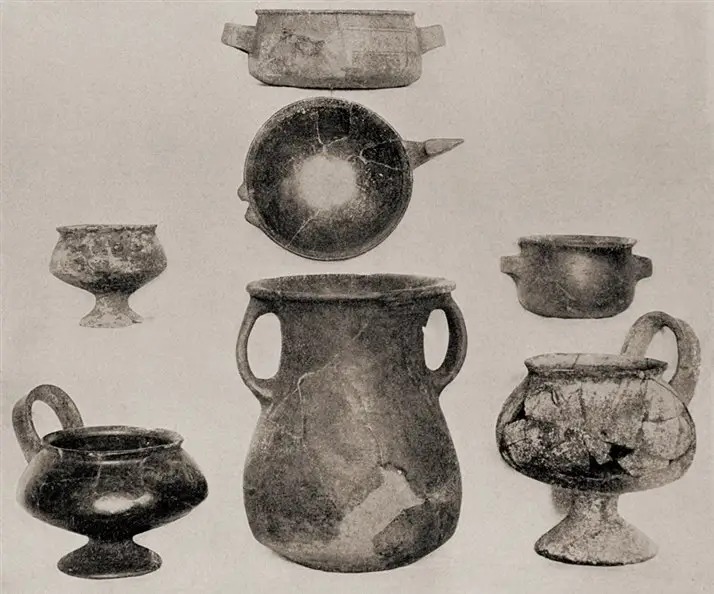
He tells that the Indians make a stop on the way to drink a glass of chicha, which is considered the Andean beer at the time had a cost of two cents a large glass.
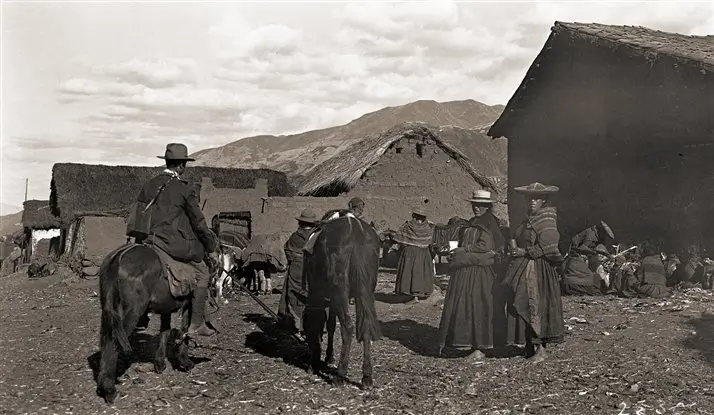
The photo shows us how the markets work, especially the sale of pots, raquis and more made of pottery, handmade and fired in primitive kilns with a rustic and variegated decoration. They had a cost of five and 50 cents and were displayed on the floor of the streets.
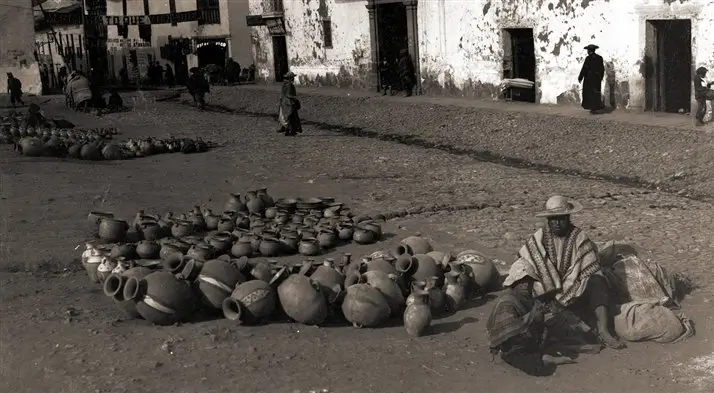
Finally, Professor Hiram Bingham was amazed by so much wonder that was there, according to his testimony indicates the following "That left me breathless [...] then write. It was like an implausible dream." Definitely, discovering and reaching an important archaeological site was one of his greatest explorations.
We know from history that many came or found this archaeological site, but none gave it the courage to show the whole world what it meant and above all to tell its history.
It took him a lot of effort and a great task to show these constructions because they were full of bad stones and were not very visible. However, all his work rewarded him to be known as the discoverer of Machu Picchu, today the most visited archaeological city and considered one of the 7 wonders of the world.
